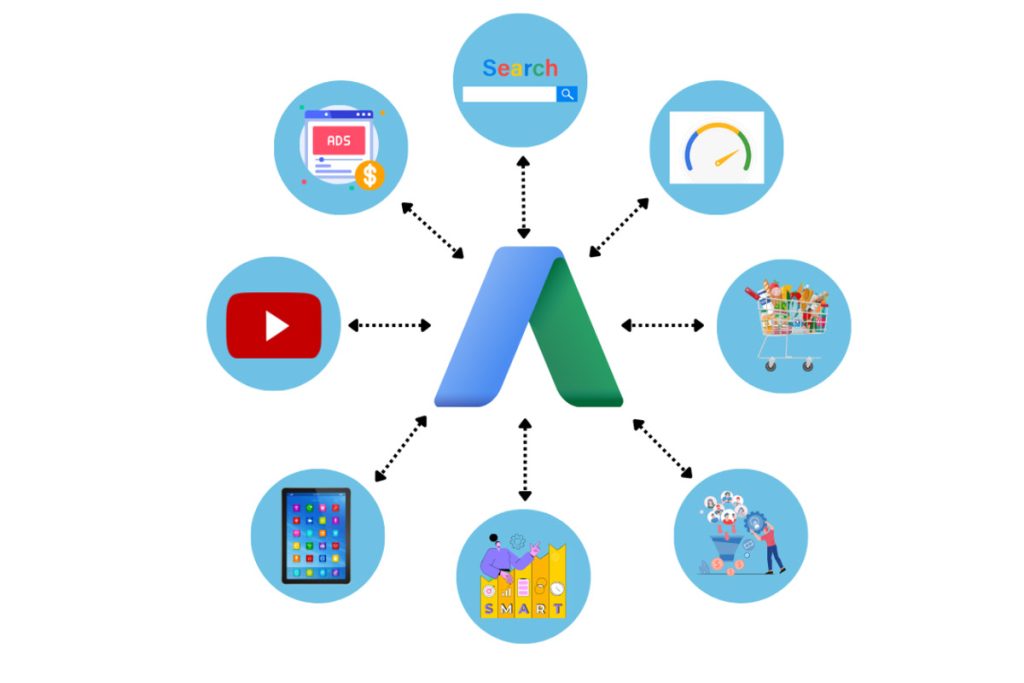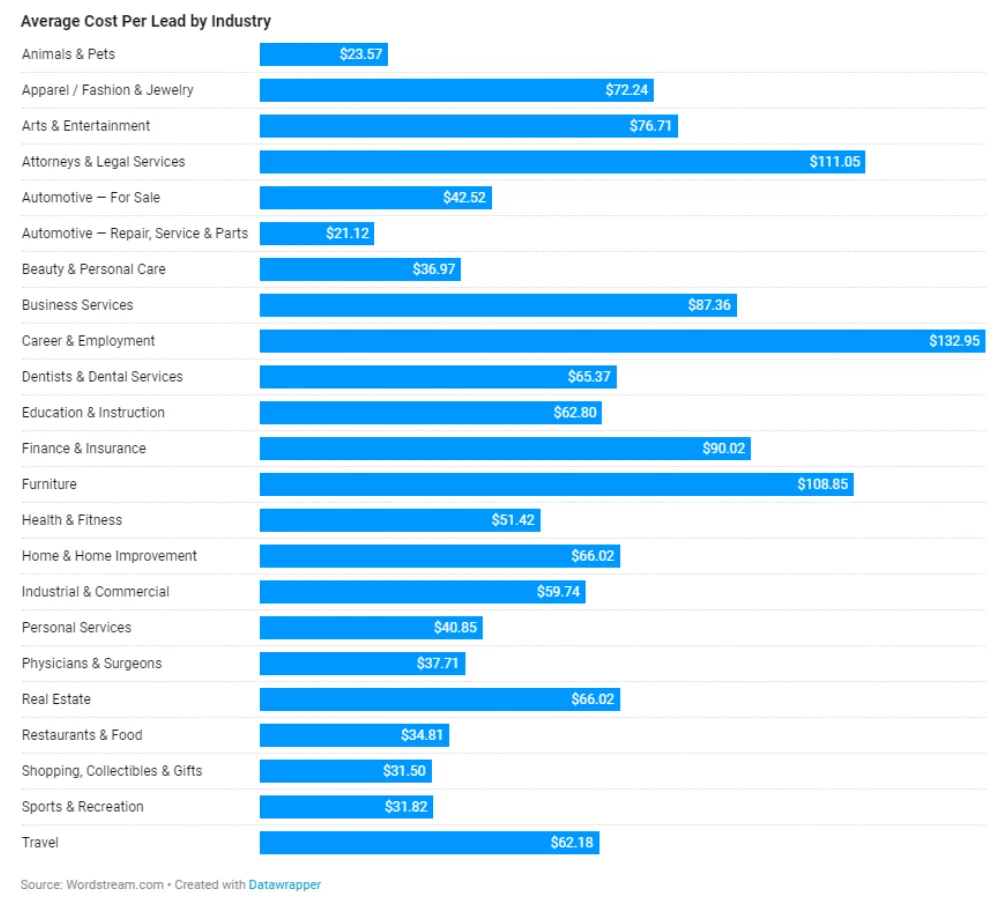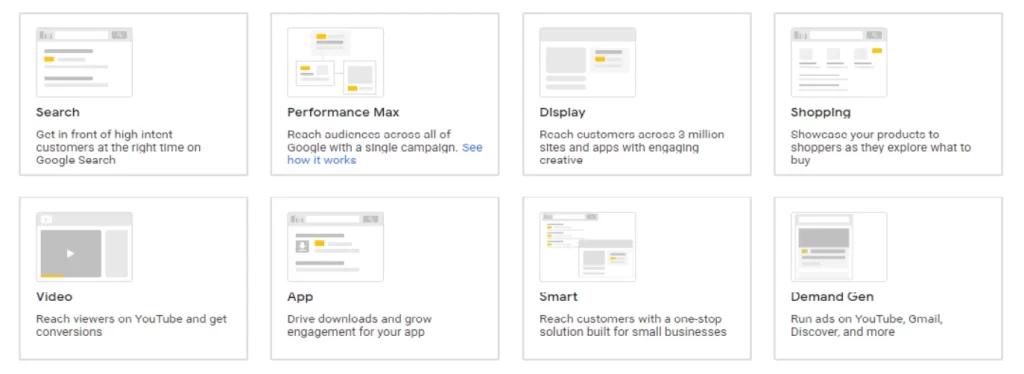Unleashing the Power of Google Ads: Ignite Your Online Presence

In the digital realm, paid advertising stands as a linchpin for businesses looking to expand their online footprint. Google Ads offers a dynamic stage for advertisers to craft responsive search ads, engaging display ads, and a plethora of other advertising formats across the expansive Google advertising network. With Google Ads at their disposal, businesses can meticulously target their promotions to specific keywords, demographics, interests, and more, thereby enabling them to connect with their ideal customer base.
Understanding Google Ads: A Multi-Faceted Platform
Google Ads isn’t a singular entity but a composite platform that comprises the Google search engine, search partners, the Google Display Network, audiences, websites, videos, YouTube channels, mobile apps, and more. Businesses can harness Google Ads to channel highly targeted traffic to their websites, facilitating an increase in conversions, encompassing leads and sales.
The Mechanism of Google Ads
The journey begins by setting up a Google Ads campaign. The first step is to meticulously choose the most pertinent keywords for your business, with valuable assistance from free tools like the Google Keyword Planner. The selection process should focus on identifying words and phrases that prospective customers would employ during their search for products or services like yours.
Google Ads operates on the principle of aligning your chosen keywords with the advertisements and landing pages you’ve crafted. When someone searches using the keywords you’ve earmarked, your ad may make an appearance, striking a harmonious chord with their quest. In the realm of the Display Network, your ads find their place based on your chosen audiences or websites with relevance to your business.
Deconstructing Google Search Network Ads
For search network campaigns, advertisers zero in on specific keywords they wish to associate with potential customers’ search queries. They create ads and landing pages carefully tailored to these chosen keywords. Importantly, advertisers incur costs only when people actively click on their advertisements.
This click-based pricing model ensures that advertisers only pay when genuine interest is expressed, thus serving as one of Google's primary revenue sources.
Before delving into Google Search Ads campaigns, it’s imperative to grasp the fundamentals: comprehending the bidding process, understanding how Quality Score operates, configuring Campaigns and Ad Groups, crafting ads, creating landing pages, and unraveling the dynamics of cost-per-click.
The Inner Workings of the Google Ads Auction
Ever wondered how Google Ads determines which ads appear when a user initiates a search? The answer lies in an ad auction that dictates the order of appearance. This auction hinges on two pivotal factors: your bids and quality scores. Google scrutinizes the bids and quality scores of every advertiser participating in the ad auction to establish an Ad Rank.
Cracking the Code of Ad Rank
Ad Rank, the cornerstone of the ad auction, is the outcome of your bid and quality score during auction time. The ad auction takes place each time someone conducts a Google search. It enables Google to assess the quality of ads and the competitiveness of bids instantaneously for every search query that triggers advertisements.
Bids:
Advertisers set their bids, indicating the maximum amount they're willing to pay for a click on their ad. Google Ads has introduced intelligent bidding strategies such as Enhanced CPC, Target Return on Ad Spend (Target ROAS), and Target Cost-Per-Action (Target CPA), enabling advertisers to establish automated bids centered on conversions and their respective values.
Quality Scores:
The other crucial factor shaping the auction is the quality of your ads, encapsulated within your Quality Score. Quality Score comprises Ad Relevance, Expected Click-Through Rate, and Landing Page Experience. In essence, Google Ads assesses the overall quality and relevance of your ads and landing pages based on a user's search query.
Google Ads Placement: Where Do They Appear?
A fundamental distinction exists between paid advertisements and organic search results. Google Ads are positioned at the top or bottom of Google search results, with rankings determined by the Ad Rank factors elucidated earlier.
Exploring the Google Search Network
The Google Search Network serves as the prime canvas for your search ads to manifest. Comprising the Google Search Engine and a consortium of search engine-equipped websites, the network ushers your ads into the limelight. When you embark on advertising within this network, your ads find a home adjacent to search results on Google and Google search partners.
The Google Search Network shines in its ability to connect advertisers with individuals actively in pursuit of products and services. On average, this network fuels more conversions and boasts a higher conversion rate than the Google Display Network.
Demystifying Google Display Network Ads
Advertisers can employ audience targeting or content targeting to reach individuals as they navigate specific websites, view YouTube videos, or engage with mobile apps. The Google Display Network offers a potent avenue for advertisers to reach relevant audiences as they traverse the online landscape. Display ads crafted by advertisers are designed to drive traffic back to landing pages on their websites, where products and services are showcased.
The Pivotal Question: How Much Does Google Ads Cost?
The financial aspect hinges on your targeting preferences and the competitive landscape. An advertiser’s keyword bids, budget, competition, audience targeting, and keyword quality scores form the bedrock of cost considerations. For advertisers setting their sights on the end goal, the average cost per lead on Google Ads is $53.52. These are domains inhabited by fiercely competitive industries such as law, insurance, banking, and marketing, boasting high lifetime values. Nevertheless, most advertisers typically invest in the range of $0.50-$3.00 per click, contingent upon their industry and targeting.

Advertisers retain full control over their budgets, and they can refine their campaigns over time to optimize costs.
Mastering Google Ads: The Path to Success
To thrive on this advertising platform, it’s imperative to wield keyword research tools like the Google Keyword Planner to unearth relevant and popular keywords for your business. Subsequently, testing and optimizing your Campaigns, Ad Groups, Keywords, Audiences, Ads, and Landing Pages is crucial. Google Ads holds immense promise for businesses across the spectrum, but it necessitates continuous testing and fine-tuning.
Is Google Ads Right for You?
The resounding answer is yes. Paid online advertising is an indispensable catalyst for business growth, and even businesses with modest budgets can harness the power of Google Ads to expand their customer base. Whether your business offers products or services, exploring Google Ads is not merely a recommendation but a strategic imperative. It allows you to connect with customers actively seeking your offerings. Furthermore, Google Ads facilitates an objective assessment of its efficacy through conversion tracking.
Partner with WT Digital Agency for Success
Take your business to the next level with Google Ads. Partner with our team of experts at WT Digital Agency to unlock the full potential of this powerful advertising platform. Our data-driven approach will help you laser target your ideal customers and maximize ROI. Don’t leave money on the table – contact us today to ignite your online presence!
About the Author

Kevin Bossons
General Manager
With over 15 years of experience in digital marketing and search engine optimization, Kevin has grown from an SEO contractor to General Manager at WT Digital Agency.
